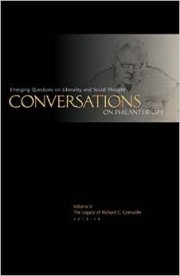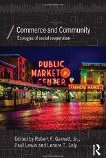So All May Eat
In the heart of Denver on Colfax Avenue, you enter a cheery storefront café and step in line to see what’s on the menu today. The options are just a few: two salad choices, two soups, and two pizza varieties. You order a bowl of creamy mushroom soup and a chocolate chip cookie. Instead of checking out at a cash register, you put a $10 bill in a donation box. Behind you, a guy pulls out a handful of coins and deposits them after you.
“Everyone is treated the same, whether you put 20 cents or $20 in the box,” explains Libby Birky, co-owner of So All May Eat (SAME) Café, a pay-as-you-can restaurant, the second of its kind in the country.
Exiting ‘handout mode’
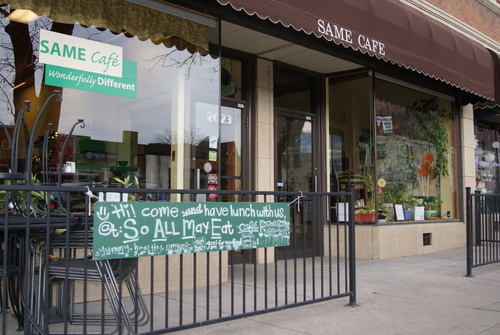 Libby and her husband Brad started SAME in 2006, after a decade of volunteering in homeless shelters across the country. One of the key observations they made was that those living in poverty often made sacrifices to their health for the sake of survival, not the least of which to their nutrition.
Libby and her husband Brad started SAME in 2006, after a decade of volunteering in homeless shelters across the country. One of the key observations they made was that those living in poverty often made sacrifices to their health for the sake of survival, not the least of which to their nutrition.
“We saw people ending up in the ER for things largely caused by poor diets,” Birky said. Things like type 2 diabetes, sleep apnea, high blood pressure.
She also saw the impact of poor diet on people’s self-image, particularly for those who mostly consumed old leftovers from grocery stores or highly-processed foods.
“If you’re eating someone else’s garbage, you’re going to feel like garbage.”
The Birkys also saw that the homeless programs that seemed most effective were those that required something of those they were serving, in the form of chores like cleaning the bathrooms, dusting, or vacuuming.
Those observations, combined with a keen entrepreneurial spirit and a love for good, nourishing food led the Birkys to start SAME seven years ago.
A fast-casual lunch restaurant, SAME draws all types: doctors, lawyers, people living on the streets. While the market value of a typical meal is about $7, those who can pay more, often do. Eighty percent pay in the range of $3-$5. Although the café doesn’t typically break even from the donation box, requiring people to pay something—anything—translates into responsibility for those who are used to a lifestyle of freebies.
“For people who have lived in generational poverty, they expect a handout,” Birky explains. “We know some people are stuck in ‘handout mode’ . . . and we feel when you give people an opportunity to give back, it really values them as a person.”
Another way that SAME dignifies people is by giving them the option of working for their meal. Every day, they put up a volunteer sign-up sheet with 10 slots. And every day, the list is filled up; and there’s always a waiting list. Some work simply for food; sweeping the floors and wiping down tables. Others come for job training. Everyone who wants to work in the kitchen must complete a food safety class, a credential that they can then take with them to a paid job in the food industry. Not to mention all of the hands-on experience and nutritional education they receive while learning to make healthy dishes such as cold basil melon soup or Greek veggie pizza.
Birky has found that inviting customers to contribute to the inner workings of the cafe has become another way to counter the ‘handout mindset.’
“It’s amazing to watch what happens when you ask people to participate . . . people take ownership of the place.”
SAME purchases all of its produce, grains, dairy, and meat from local farmers, concocting recipes from whatever happens to be in season. Radishes. Bok choy. Whatever.
 Birky views her role not simply as owner, but also as an educator who encourages her trainees and customers to eat more healthfully. Often she watches the habits of her regulars and often nudges them in the direction of more nutritious choices.
Birky views her role not simply as owner, but also as an educator who encourages her trainees and customers to eat more healthfully. Often she watches the habits of her regulars and often nudges them in the direction of more nutritious choices.
“If someone asks for pizza and a cookie four days in a row, I’ll tell them I’ll give it to them only if they [also] try a salad.”
If the food contains something foreign to the customer—quinoa, for example—Birky often encounters skepticism. But, inevitably, “they come back and ask questions about it.”
Deeper education happens in the kitchen where trained volunteers learn how to prepare tasty and healthy food. Birky says that one of the biggest barriers to nutrition is simply a lack of know how.
“If you don’t know what to do with an eggplant, you’re not going to eat it,” she explains.
Community cafés, coming to a town near you
In 2003, just three years before the Birkys opened SAME, a woman named Denise Cerreta felt motivated to start the first pay-as-you-can community café in Salt Lake City, One World Café. Since that time, Cerreta has mentored the owners of at least 30 other community cafés across the country, and is in the process of mentoring 50 more around the world, through her organization One World Everybody Eats Foundation.
“The models are slightly different because communities are different,” Cerreta explains.
Some are new businesses; others are existing cafés that are switching to the new model. Some are run by churches as a community outreach. Others are more focused on job training, giving folks opportunities to run the cash register, hostess, or cook.
All of them provide a sense of community that often both ministers to the soul and creates social networks that open doors for those who might have otherwise ended up in the streets or a shelter.
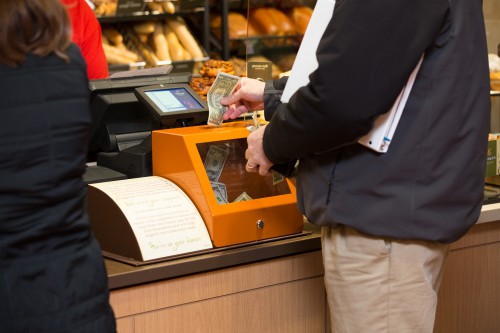 Cerreta says she often sees community cafés serving as a stopgap for those who find themselves in precarious circumstances. Someone loses their job, and they’re soon tottering on the dividing line between homelessness and stability.
Cerreta says she often sees community cafés serving as a stopgap for those who find themselves in precarious circumstances. Someone loses their job, and they’re soon tottering on the dividing line between homelessness and stability.
“Sometimes, being in an environment like [a community café], contributing, being in a normal place, keeps people from spiraling all the way down into the cracks,” she explains.
Further, the built-in network of support that is created at a community café provides the connections someone might need to get back on their feet.
“You might have been already eating at a café [for a while], and then you lose your job, but you still have that community,” Cerreta explains. “Somebody might share a nanny opportunity or an opening in their company.”
Prior to 2008, most of the cafés were self-sustaining. Since the recession, many of the cafés rely on some outside help, usually in the form of community fundraisers.
Enter Panera
 The community café model has attracted wide attention. In 2009, the national restaurant chain Panera Bread® decided to experiment with a community café model as a charitable arm of its company. Prior to this, Panera contributed $100 million in food donations every year, as well as cash contributions to organizations fighting hunger in America.
The community café model has attracted wide attention. In 2009, the national restaurant chain Panera Bread® decided to experiment with a community café model as a charitable arm of its company. Prior to this, Panera contributed $100 million in food donations every year, as well as cash contributions to organizations fighting hunger in America.
“We were doing a lot of good, but we felt a bit detached from it,” said Kate Antonacci, Director of Societal Impact Initiatives at Panera. “We were not directly interacting with the recipients of our funds and food . . . If there’s anything we know it’s how to interact with people. Why don’t our charitable activities meet that same criteria?”
Panera Cares® was the solution to this tension.
Through encouragement from One World, the leadership at Panera traveled around the country looking at other community cafés, getting ideas, and assessing what would suit them best. In the end, they came up with a café that looks almost identical to every other retail Panera location, with a few notable exceptions.
“Ambassadors” stationed at the front door explain to customers that there is no required cost to eat, but that they should pay what they can. The menu lists a “suggested donation” next to each item, and a donation box completes each “transaction.”
Over the past four years, they have opened locations in five cities—St. Louis, Detroit, Portland, Chicago, and Boston. For the most part, the restaurants are self-sustaining. Once in a while Panera has had to come to the rescue, if donations dip at the end of the month or if an air conditioning system fails, but that isn’t the goal.
“Our customers really do need to see this as a burden that they share with us,” Antonacci explains. “We’re trying to get communities to feel a sense of responsibility for sustaining it.”
And for the most part, it’s working—for the community, for the company, and for its employees, some of whom are trained through Panera Cares for regular Panera jobs.
The company recently tried introducing the pay-as-you-can model into some of its traditional stores in St. Louis on one menu item, turkey chili. Although initially successful, the experiment wasn’t sustainable, largely, Antonacci explains, because of a lack of in-store communication.
“The test did give us the information we need to make adjustments that will enable us to build a successful program on a broader scale.”
In the future, Panera plans to restructure the initiative as a seasonal program used to raise funds and awareness about food insecurity.
Can I give you a hug?
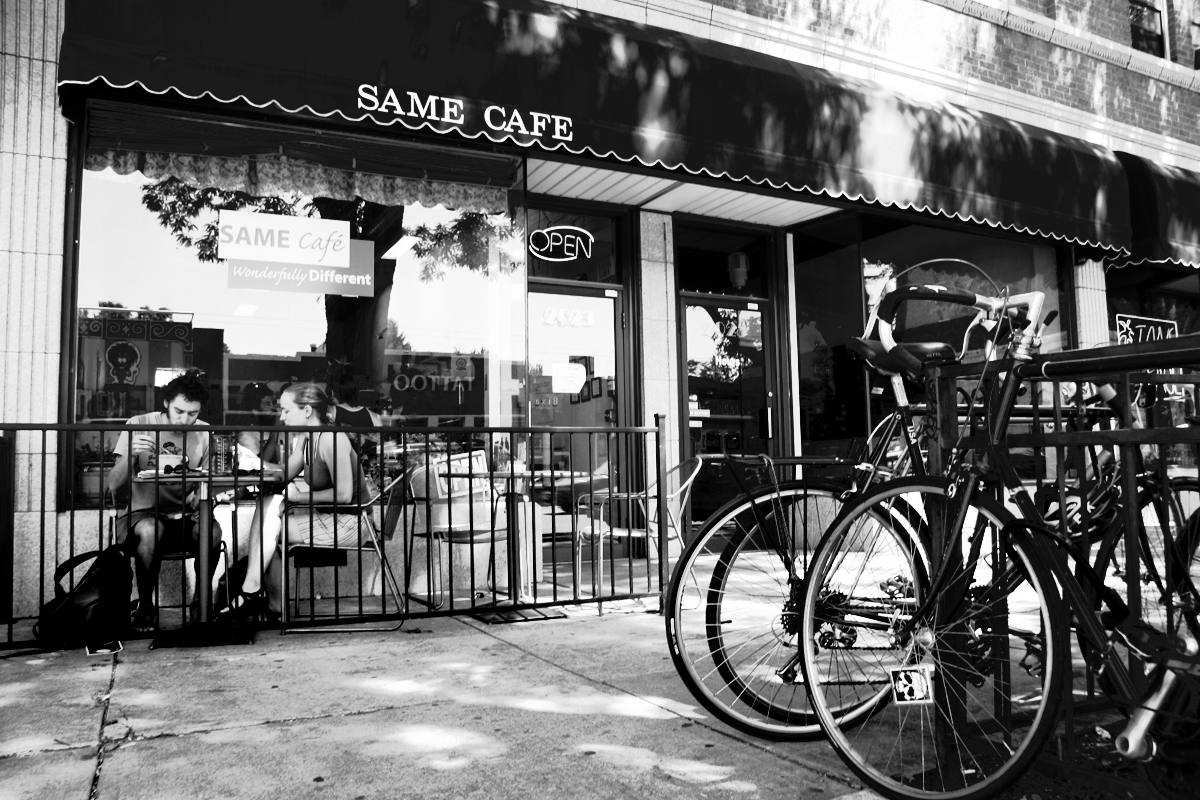 Over the past seven years, the café has seen many successes. They have seen people lose weight by eating healthy options from their menu. They have seen positive relationships built. And they have watched people get back on their feet, perhaps no more poignantly than in the case of one woman who had been coming to SAME for quite a while.
Over the past seven years, the café has seen many successes. They have seen people lose weight by eating healthy options from their menu. They have seen positive relationships built. And they have watched people get back on their feet, perhaps no more poignantly than in the case of one woman who had been coming to SAME for quite a while.
Birky tells the story:
“Recently, when I was working on a Saturday by myself I noticed ‘Kate’ on the patio hanging out. She had been in lots over the last couple of years. Sometimes, every day of the week, quietly wiping tables and sweeping the floor to pay for her meal or dropping the change she had in her pocket into the donation box. Kate is not homeless, she doesn’t appear like the stereotype of need. She is well dressed, clean, polite, articulate. But Kate is unemployed. Sometimes she gets a job, but it’s part-time and doesn’t last long. She is over qualified for sure.
“I noticed something was different about her today. She hung out on the patio for quite some time and lingered throughout the day. When the lunch crowd slowed down, she approached the counter reluctantly. I asked if she needed anything else to eat. She leaned in shyly and asked in a very quiet voice, ‘Can I give you a hug?’ As I came around the counter to hug her, I noticed she had tears in her eyes . . . She shared that today was the first day she was able to pay for her lunch. She finally landed a great job and was so grateful for SAME Cafe.”
Photos courtesy of Panera Cares and So All May Eat Cafe.



